Tree Felling Services
About Tree Felling
HRG Tree Surgeons are a leading provider of professional tree felling and arboricultural services in Southampton and the wider Hampshire area. Tree felling is an important part of proactive and responsible woodland management.
Felling is a skilled task that only experienced professionals should carry out. There are several factors to consider before felling a tree, such as its size, location and intended use. This page explains the basics of tree felling, including when and how to carry out the work safely.
What is Tree Felling?
Tree felling is cutting down a tree to prevent the spread of disease and improve safety in the area. If not carried out correctly, tree felling can be very dangerous. This type of work must be carried out by a qualified arborist who will plan the task meticulously, considering any potential hazards or risks, before starting work.
The most common reasons for tree felling are:
-
Safety
-
Location
-
Aesthetics
Safety
Felling of trees is a necessary and important part of any tree management, especially if the tree in question is dead, diseased or decaying. Removing these can be done as a preventative measure in order to reduce the risk of deadwood falling during strong winds – which can cause injury to people or damage to property.
If a decision has been made to fell such a tree, then it should be done in line with accepted arboricultural standards and practices, using the expertise of certified professionals who are trained in safe and efficient removal methods. .
Location
When it comes to felling trees due to location concerns, it’s important to identify the root of the problem accurately. By carrying out a thorough review of the site and surrounding environment, it is possible to make an informed decision on the best course of action.
In instances where a tree or its roots are causing, or may cause, structural damage or subsidence, it is sometimes necessary to remove them in order to ensure safety in the area. This can be achieved through a process of risk assessment paired with remedial works as required.
Aesthetics
Felling trees due to aesthetic concerns can be a difficult decision, but there are times when it is the best course of action. Take for example when a tree is out of place – such as in a suburban area where native species would be more appropriate. In such cases, removing the tree can result in an area that feels more aesthetically pleasing and offers a range of additional benefits; urban trees increase air quality and act as habitats for local wildlife, so taking proper steps to replace them ensures the consequences are minimal.
Thoughtful improvements focusing on environmental aspects, such as planting suitable replacements or introducing bird boxes to counteract the effect of the removal, can go a long way in preserving the area and its inhabitants while also serving to benefit everyone involved.
Do you need permission to fell trees?
Tree felling in the UK is subject to a number of regulations providing a robust framework for preserving and managing the country’s tree population.
It is illegal to fell a tree in the UK without first obtaining a licence, which can be requested from the appropriate local authority. Alongside securing an appropriate licence, individuals or businesses must also verify whether a Tree Protection Order (TPO) covers the trees they are intending to fell, as illegally removing anything under protection is likely to lead to prosecution. TPOs offer important additional protection against development and removal of healthy trees, ensuring that woodland habitats in England remain safeguarded for future generations.
Full details about obtaining permission for tree felling can be found here: tree-felling-getting-permission
Tree felling and ecology
Trees have an important role to play in the environment, especially for wildlife; a large tree can provide a home, shelter or a food source for many species. The careful and considered felling of trees can actually help enhance an area’s ecology and wildlife habitats. Soft felling techniques can be used, leaving felled trees in situ – uncovered rather than sawing them into logs. This means the decaying areas form additional homes for species looking for woodland habitats in more creative places. Focusing in this way on tree management can support increased levels of biodiversity and make positive steps towards protecting our environment.
Before undertaking any tree felling, it is important to have completed the appropriate surveys – possibly including an ecological survey. You can read more about surveys here
What is the best time of year for tree felling?
Generally speaking the best time of year for tree felling is autumn and winter as the leaves have all fallen and the new spring growth has not yet started. However, depending on the reason the tree is being removed, it may be necessary to carry out the work at other times of the year.
Our trained arborists can provide specific advice relating to your own tree stock.
How much does tree felling cost?
The cost of tree felling depends on a number of factors including:
-
Size, location and number of trees to be removed,
-
Reason for removal and special considerations (i.e. to reduce spread of disease)
-
Site accessibility,
-
Need for specialist machinery, and
-
Disposal method.
For a no-obligation estimate, please contact the team today.
Tree Felling by HRG Tree Surgeons
HRG Tree Surgeons team of qualified and experienced arborists can provide the appropriate advice when it comes to assessing the need for tree felling.
In addition to carrying out planning tree felling services, we have teams available 24/7, 365 days a year to deal with emergency situations.
For more information about HRG Tree Surgeons’ Tree Felling services, please call one of the team today.

